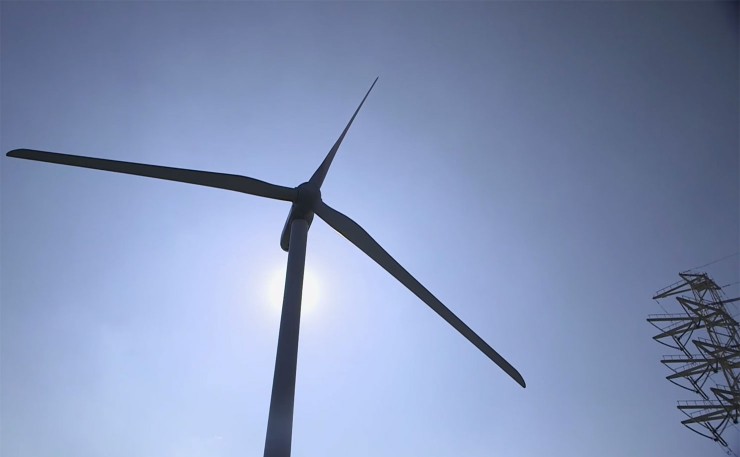Reporting that renewable energy caused the blackout in South Australia was led by the national broadcaster. Ben Eltham says the ABC was wrong, and reviews the fallout in the wake of the storm.
On September 27, a vicious low pressure system developed in the Great Australian Bight. As it rotated, the ‘mid-latitude cyclone’ sucked cold air up from the frigid southern ocean, pushing a cold front towards South Australia with 100 km/h winds.
The storm smashed into South Australia the next day, felling trees, ripping off roofs and buckling high-voltage transmission lines. There were at least two local tornados, including one at Blyth.
Shortly after 4.18pm, the entire South Australian electricity grid went down. Widespread damage to the network, including to several 275kV transmission towers, led to the grid overloading and shutting down.
In the wake of the shut-down, the national grid operator AEMO worked frantically to restart the system. It took several hours before the grid got back up and running again; local damage meant some homes were without electricity for days.
But if you thought the weather was severe, the political storm that enveloped renewable energy in the wake of the blackout was even more damaging.
That’s because the blackout provided the perfect opportunity for the enemies of clean energy in the Coalition to launch an unprecedented assault against renewables, even before the full details of the blackout were known.
Anti-renewable rhetoric is nothing new from the Coalition. But what surprised many was the enthusiastic support of the ABC.
Just hours after the storm had struck, the ABC’s political editor Chris Uhlmann was on the airwaves, blaming the blackout on South Australia’s relatively high concentration of renewable energy.
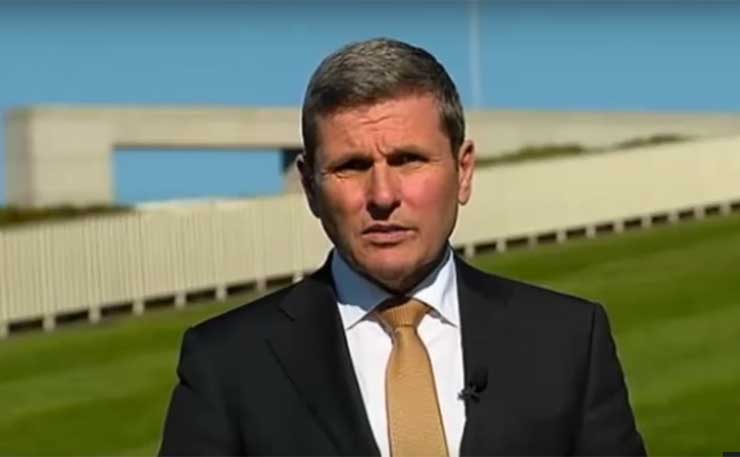
Apparently briefed by both government figures and Nick Xenophon, Uhlmann reached an editorial judgment even before the wind had stopped howling. Leveraging the ABC’s cross-platform capabilities, Uhlmann appeared on radio, TV and online in the hours after the blackout.
His article on the morning of September 29 sounded a clarion call against the spectre of renewables that he claimed were haunting Australia’s electricity grid.
“The key question is whether that state’s heavy reliance on wind turbines might have increased the risk of a state-wide blackout,” Uhlmann thundered. “Renewables are the future but, today, they present serious engineering problems,” he warned, adding a nice twist for the climate denialist right: “To deny that is to deny the science.”
Uhlmann even warned of nation-wide blackouts, unless renewables were addressed. “The grid is being transformed, and that transformation needs to be managed sensibly, or the entire nation might go to black.”
At the time he wrote that article, Uhlmann had no credible evidence for these claims. It’s hard to know how he could possibly have known, in fact. If he did have private briefings from AEMO, Electranet or the South Australian government, he did not disclose them.
The night before, in a media conference, South Australian Premier Jay Weatherill had sheeted home the grid failure to the storm. “Essentially what happened is a massive set of power was removed and when that happens it trips the system,” he told the media on Wednesday evening.
In a statement released an hour before Uhlmann’s September 29 article was published, AEMO also quite clearly stated that the grid was taken down by a cascade of transmission failures that began with fallen towers in the state’s north.
Initial investigations have identified the root cause of the event is likely to be the multiple loss of 275 kilovolt (kV) power lines during severe storm activity in the state.
These transmission lines form part of the backbone of South Australia’s power system and support supply and generation north of Adelaide. The reason why a cascading failure of the remainder of the South Australia network occurred is still to be identified and is subject to further investigation.
Uhlmann’s article did not initially mention either Weatherill’s remarks, nor the AEMO statement. Later that day, it was updated to include them.
A delighted government leapt on the assertion that renewable energy might be to blame. Senior ministers, and then Malcolm Turnbull himself, made statements questioning the role of wind generation in the event, and attacking state government renewable energy policies.
On October 4 and then again two days later, Uhlmann wrote further ‘analysis’ pieces for the ABC. He again blamed South Australia’s renewable energy policies for the blackout.
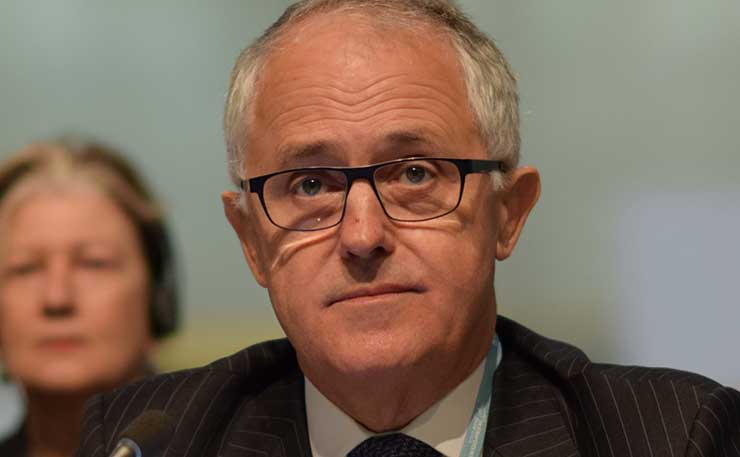
On October 6, he even adopted the position of a religious ‘heretic’, warning that “if those who claim to be friends of renewables continue to respond to any criticism with hysterics, then they will be responsible for ensuring the budding renewable industry suffers irreparable reputational damage.”
Uhlmann’s rhetorical flourishes made for great reading. They came complete with some impressive technical details about “synchronous” and “asynchronous” energy supply sources. It was all grist for the mill of a hungry media cycle.
But Uhlmann was wrong.
New Matilda approached a number of noted energy analysts and grid consultants in an attempt to verify Uhlmann’s claims. Their responses ranged from negative to derisory.
Respected energy analyst Bruce Mountain is the Director of energy consultancy CME. He told us flatly that “there is no doubt that absent the weather this would not have occurred”.
“The falling of the power lines, and consequential loss of generation, caused the tripping of the interconnector,” he said in a phone interview.
Mountain said he could not understand Uhlmann’s claims about asynchronous generation by wind farms.
“There is a rectifier in every wind turbine which takes direct current out of the wind-powered generator, it is rectified into an AC signal and it goes into the grid. The power electronics ensure a constant frequency of oscillation of the current from the wind generator, irrespective of wind speeds.”
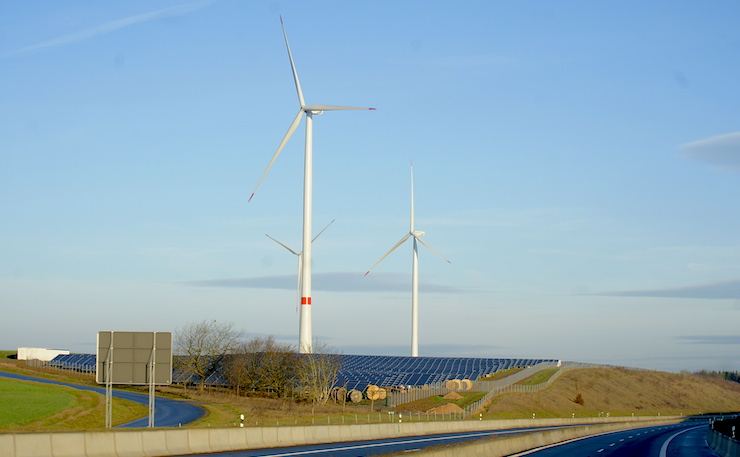
Mountain added that Australia does need to ensure back-up capacity to address the intermittency of wind and solar. Renewable sources (hydro and pumped storage) and storage devices such as batteries, smarter grid systems, and demand-side management are likely to be valuable in this back up.
“Wind is a huge energy resource just about everywhere, it’s a well-established technology,” Mountain said.
Mountain also said the investigation into the events of South Australia would consider the operation of the power system and market. “Might the network failures and consequential impact have been anticipated?” he asks.
At UNSW, the Institute for Environmental Studies’ Mark Diesendorf is widely known as a pioneer in the research of renewable energy systems in Australia.
“Yes, it was a weather event,” he told New Matilda. “We don’t now what would have happened if there hadn’t been any wind turbines, but it’s a pretty reasonable assumption to make that the whole system would have collapsed anyway – three of its main transmission lines were down.”
“There does have to be continuing balance between supply and demand, so to that extent Uhlmann was just stating the obvious, but under most conditions with lots of renewables you can maintain the balance,” he explained.
“I was very disappointed with the ABC’s coverage,” Diesendorf said. “It certainly created the impression that wind power was the cause of all our problems, and there’s not a shred of evidence that has been produced [for that]yet.”
“They should have been taking a more critical view of the statements of the government that has proven it is hostile to renewable energy,” he argued.
Dr Hugh Saddler is the Senior Energy Consultant for energy engineering firm Pitt & Sherry. He contradicts Uhlmann’s assertion that “the state’s heavy reliance on wind generation might have made its grid more vulnerable to a blackout.”
“No,” he wrote in an email in response to our questions. “There was enough local synchronous generation on line in South Australia at the time, plus Heywood, to provide more than enough inertia and also FCAS (Frequency Control Ancillary Services). AEMO has been doing reports each year for several years calculating how much synchronous generation will need to be online at all times, plus Heywood.”
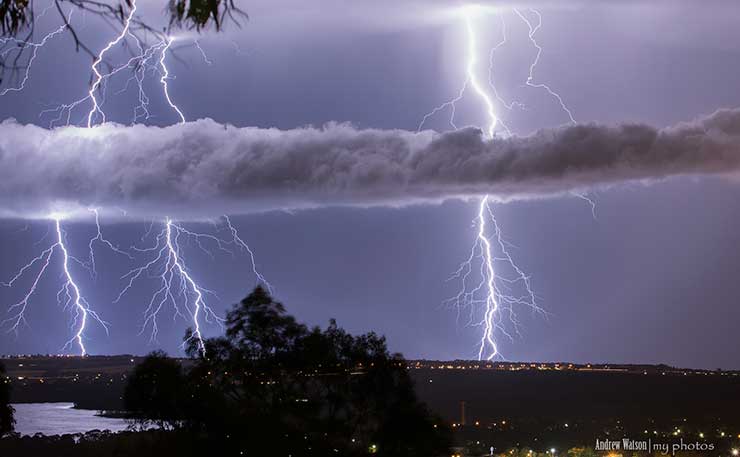
Saddler describes Uhlmann’s descriptions of synchronous and asynchronous supply as “deeply wrong” and “a classic manifestation of Alexander Pope’s aphorism, ‘a little learning is a dangerous thing …’”
Saddler gives perhaps the best succinct explanation of what happened on September 28: a cascade of events triggered by the loss of transmission towers.
“Had the storm not taken out the whole of one 275kV line and the northern segment of two others (leaving just one fully operational), there would have been no blackout,” he wrote. “The final triggering event was the loss of output from six wind farms, presumably because they tripped out because of their protection settings.”
“The load then switched to the Heywood Interconnector (within a fraction of a second), which was overloaded and tripped, followed immediately by the two gas generators online at the time.”
Saddler explained that the wind turbines shut down to protect themselves in the wake of the transmission failure – a fact confirmed by Neoen Australia yesterday. “There is probably an issue about the protection settings being ‘too conservative’,” he added.
Like Mountain, Saddler argues that the real lesson here was the need for more distributed energy supply, particularly batteries and hydropower. “Apart for storing energy for short periods, batteries are perfect for providing system inertia.”
Other energy experts quoted in the media – including by the ABC itself – have come to similar conclusions. Gizmodo carried interviews with engineering professors Ken Baldwin and Roger Dargaville, both of whom stressed the weather as the cause, not the energy supply mix. Baldwin told Gizmodo’s Rae Johnstone that there was “almost unanimity” on this point.
Finally, a number of ABC outlets themselves carried interviews with the Grattan Institute’s Tony Wood. Wood is known to be a prominent sceptic of high renewable energy targets. But even he maintained last week that “there’s no evidence to suggest this was caused by too much wind power, or the dependence on wind power.”
—
UNFORTUNATELY for the accuracy of the ABC’s coverage, Uhlmann’s reporting set the tone for the national broadcaster as it covered the South Australian blackout, as an analysis of the ABC’s coverage establishes.
A content analysis of the ABC’s blackout reporting reveals a clear bias against renewable energy in the ABC’s reporting of the blackout.
New Matilda analysed all ABC content since September 28 on the blackout, using the Factiva news database and the ABC’s own search engine. A total of 54 articles were examined between September 28 and 11 October. Each article was read or listened to, and coded according to angle and its attitude towards renewable energy.
Of the 54 articles, 23 blamed renewable energy for the blackout, or led with claims by the government that blamed renewables for the outage. In contrast, there were 12 that were either positive about renewable energy, or that reported that renewable energy was not the cause. 19 were neutral.
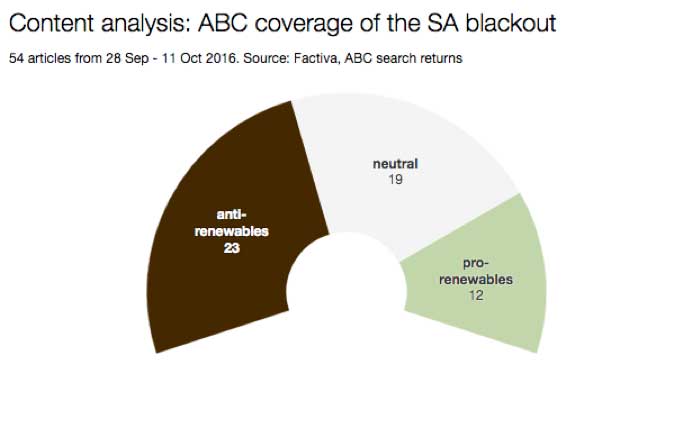
Perhaps the most common thread in ABC coverage was to lead its reports with anti-renewable attack lines from the Coalition or South Australian Senator Nick Xenophon.
The ABC ran at least 11 separate articles covering politicians blaming the blackout on renewable energy, including comments from Malcolm Turnbull, Josh Frydenberg (several times), Greg Hunt, Barnaby Joyce, and state opposition leader Steven Marshall. The ABC’s Fran Kelly even interviewed Ceduna mayor Alan Suter on his views about renewable energy.
On September 29, the ABC covered Prime Minister Malcolm Turnbull’s attack on state renewable energy policies, directly linking the blackout to renewable energy. Stephanie Anderson’s report led with the attack on renewables.
“Prime Minister Malcolm Turnbull has criticised the state Labor governments, saying they have prioritised lower emissions over energy security, following a state-wide blackout in South Australia yesterday.
South Australia’s entire power supply was cut off when wild weather toppled dozens of transmission towers and tripped the interconnector with Victoria.
Mr Turnbull said measures targeting lower emissions had to be consistent with energy security.
He told reporters in Tasmania this morning that intermittent renewable energy sources posed a ‘real threat’ for energy security.
Later in the piece, Anderson cautioned that “experts have dismissed suggestions a reliance on renewable energy was to blame for the outage.” But this was well down the page, and underneath a subheading that stated “Concern raised over renewable energy.”
This kind of reporting, in which government attacks against renewable energy were reported prominently, dominated the ABC’s coverage of the blackout.
Another good example was this article on October 3 by the ABC’s Alexandra Beech. “Federal Industry Minister Greg Hunt has blamed the South Australian Government for exacerbating last week’s state-wide power outage,” the article led, reporting Hunt’s recent opinion piece in Fairfax Media attacking the South Australian government’s energy policies.
After running Hunt’s attack lines at the top, it quotes Labor’s Bill Shorten second, and the Greens’ Richard Di Natale at the end.
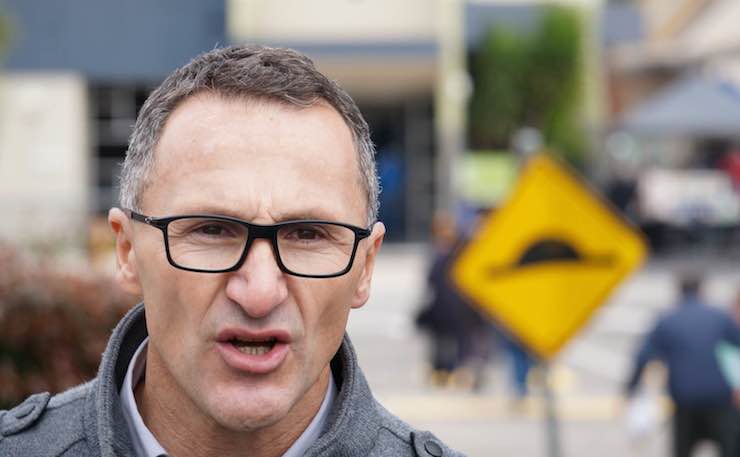
A similar example was the ABC’s online explainer, published on September 29.
The article was entitled “SA power outage: How did it happen?” Again, the article leads by questioning whether renewable energy is to blame.
“South Australia and its 1.7 million residents were left without power on Wednesday evening following severe storms.”
So have recent events and a focus on renewable energy created the ‘perfect storm’ for a state-wide blackout?”
The explainer quotes South Australian Premier Jay Weatherill first, but then goes on to extensively quote Xenophon and Josh Frydenberg, both attacking the state’s renewable energy policies.
David Lipsom’s Lateline report on the blame game followed the pattern. The report was introduced with the following lead: “A political debate is underway about how best to integrate renewable energy into Australia’s power grid following a state-wide blackout in South Australia.”
But the report itself contradicted this. Lipsom spoke to a number of experts, including Bruce Mountain, all of whom reiterated that renewable energy was not to blame.
Days after the blackout, and even after the AEMO interim report had been released, the ABC was still framing its reportage by questioning renewable energy.
On October 6, Weatherill was interviewed by the ABC’s Michael Brissenden. This is how Brissenden introduced the segment:
As [Tom Iggulden] explained, the dramatic blackout in Australia last week has injected new energy into the political debate over the transition to renewables.
The Federal Government has warned the states that their targets are too ambitious, and a meeting of state energy ministers will be urged to look at a more national approach.
A preliminary report from the Australian energy market operator yesterday suggested that a drop in generation at six wind farms during the storm may have contributed to an overload of the crucial interconnector with Victoria.
I spoke earlier to the South Australian Premier, Jay Weatherill.
Weatherill went on to stress the findings of the AEMO report, and to argue that the state’s energy mix was not to blame for the blackout. Brissenden was having none of it, asking repeatedly whether wind farms were to blame.
There was some balance. A notable counter-example to the prevailing trend was this article by Matthew Doran, entitled “SA weather: No link between blackout and renewable energy, experts say.” In contrast to the reporting from Uhlmann and others, Doran actually approached engineers and energy analysts like the Grattan Institute’s Wood, who told him that renewables were not to blame.
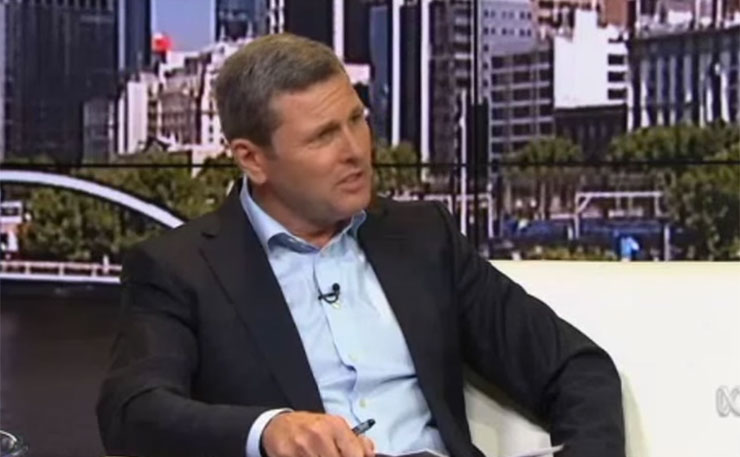
But the line from Uhlmann was consistent throughout. In addition to his appearances on TV and radio, he wrote three opinion pieces in the wake of the blackout. All blamed renewable energy for the outage.
The ABC’s coverage of the blackout is a good example of how a dominant frame, once established, can exert a long-lasting influence over media coverage of a particular event.
On October 6, the ABC’s AM program carried an interview with US entrepreneur Ilen Zazueta-Hall. Zazueta-Hall was generally supportive of renewables (although warning about the rise of so-called ‘dumb solar’), but the article was once again introduced with a lead questioning the role of renewable energy in the blackout:
Yesterday’s release of the preliminary report into the state-wide power outage after last week’s super storm in South Australia hasn’t stopped argument over the role of renewables – especially wind energy – in the crisis.
The report – by the Australian Energy Market Operator, or AEMO – said that the blackout was ‘triggered’ by the extreme weather, but there were still questions to be answered about how each component of the electricity system responded.
A leading US solar energy developer says that the South Australian crisis will drive the roll-out of even more renewables.
There were other angles to pursue. Matthew Doran’s article suggested one possible way to report on the blackout: by speaking with experts and to AEMO, and in reference to the established facts on the public record such the interim report.
Another interesting aspect of the ABC’s coverage is what it has ignored. Buried in the AEMO interim report was an intriguing suggestion that the electricity grid’s backup power generation systems had failed.
These back-up generators are called “System Restart Ancillary Services.” There were two supposedly on duty on September 28. Both were fossil-fuel generators. Both failed. AEMO’s report says it was unable to start up the state’s main gas generator at Torrens Island, because the two ‘black start’ generators didn’t work as they should have.
Ironically, the reason for this was because of damage from the storm. “SRAS provider 2 was not able to provide black start capability due to the damage caused by the storm to its auxiliary diesel units which are necessary for the gas turbine to provide restart capability,” AEMO’s report notes on page 19.
This is not a trivial matter – AEMO pays electricity generators millions of dollars for the SRAS back-up service. But in the crucial moment, neither of the two ‘black start’ generators could be brought online.
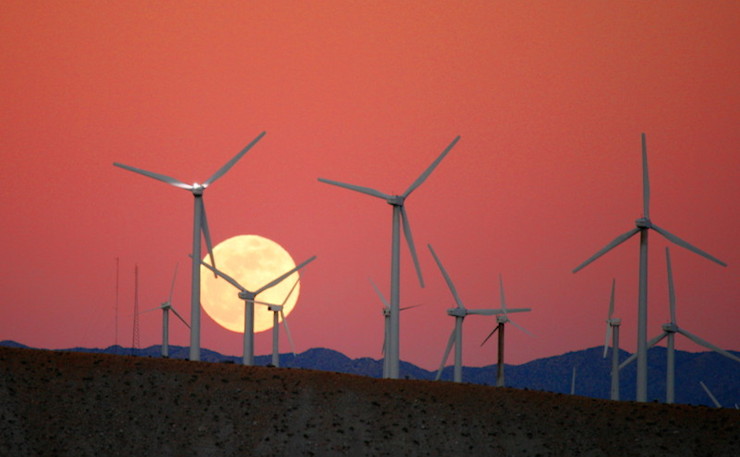
No less a figure than Ross Garnaut pointed this out last week. Referring to the failure of the back-up generators, Garnaut questioned what had happened on 28 September. “There are some quite big questions about why the National Electricity Market systems did not work as they were designed to,” Garnaut told reporters in Adelaide, in remarks that were picked up by Renew Economy and the Australian Financial Review, but not by the ABC.
We’ve heard nothing about the failure of the back-up generators from the ABC or Chris Uhlmann so far.
The ABC’s coverage of the South Australian blackout matters because, as taxpayers and citizens, Australians require independence and accuracy from the national broadcaster.
Accuracy is central to the ABC’s mission. It is enshrined in 80 years of tradition, as well as formal Editorial Policies.
As the ABC’s editorial policy states:
The ABC has a statutory duty to ensure that the gathering and presentation of news and information is accurate according to the recognised standards of objective journalism. Credibility depends heavily on factual accuracy.
But there were grave inaccuracies in Chris Uhlmann’s reporting of the South Australian blackout, and those inaccuracies leached into the ABC’s broader coverage.
There are shades here of the ABC’s repeated failures to adequately cover the unfolding infrastructure disaster of the National Broadband Network. Once again, political considerations appear to have trumped sober assessment and diligent factual reporting of a complex policy issue.
As New Matilda revealed in January, the ABC’s senior management pressured its former technology editor Nick Ross to write anti-Labor articles on broadband policy in 2013. Ross had written a prescient 11,000 word article that predicted many of the technical problems and cost blowouts that the National Broadband Network is now encountering. Ross’ highly critical appraisal of Coalition broadband policy had angered then-Communications spokesperson Malcolm Turnbull.
Ross eventually left the ABC, after being sidelined by ABC management. The ABC continues to deny that any editorial policies were breached.
The ABC is certainly still capable of sound, substantive reporting. But the Uhlmann line on renewables reveals another, more disturbing sort of journalism at Aunty: pre-determined, ideologically coloured, and thinly-sourced. In other words, exactly the sort of journalism that the ABC is often criticised for by conservatives.
Uhlmann was right to point out that the blackout was a significant event. He was right to ask how that blackout happened, and what the implications are for Australian energy policy.
But on the most important aspects of the South Australian blackout, Uhlmann was wrong.
The entire nation is not about to go black.
Asynchronous power was not the issue. The blackout was not caused, or exacerbated, by renewable energy. It was not caused by the number of wind turbines connected to the South Australian grid.
It was caused by the storm.
Donate To New Matilda
New Matilda is a small, independent media outlet. We survive through reader contributions, and never losing a lawsuit. If you got something from this article, giving something back helps us to continue speaking truth to power. Every little bit counts.

